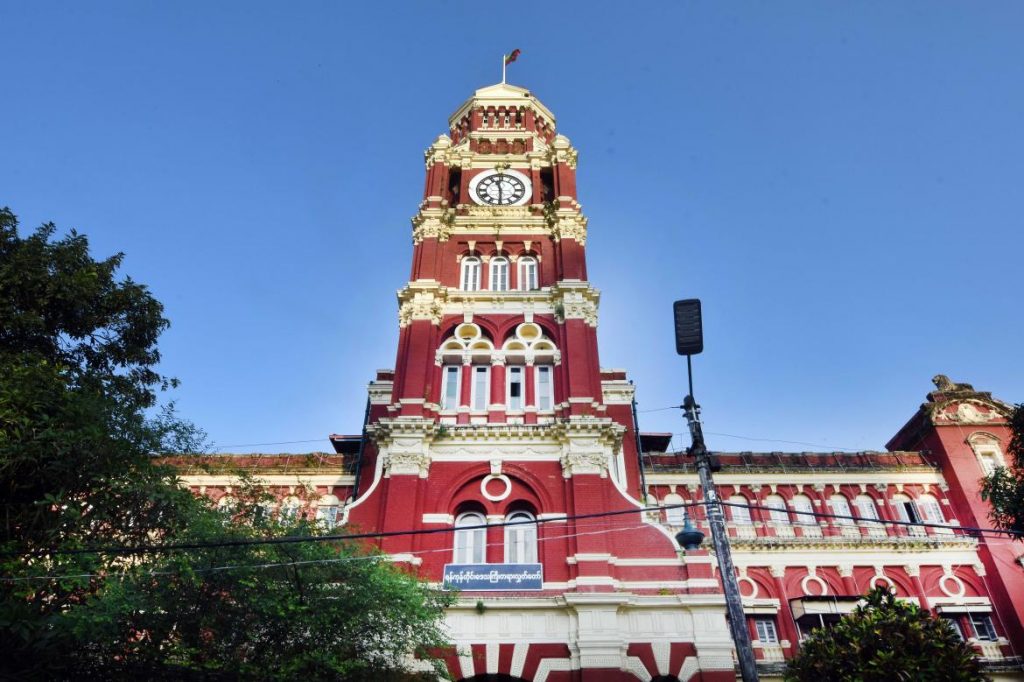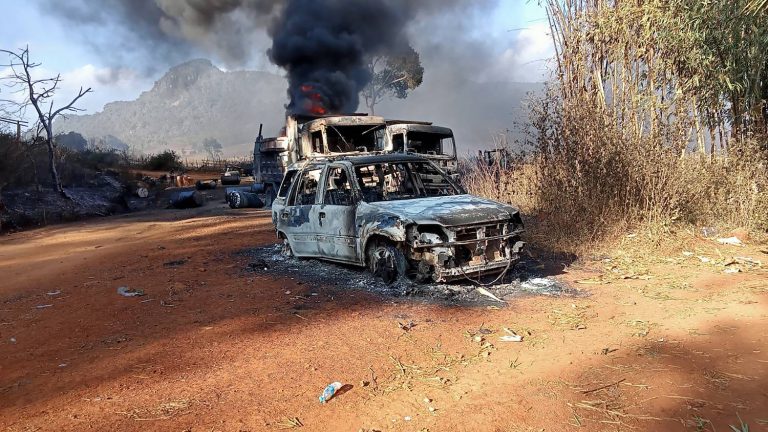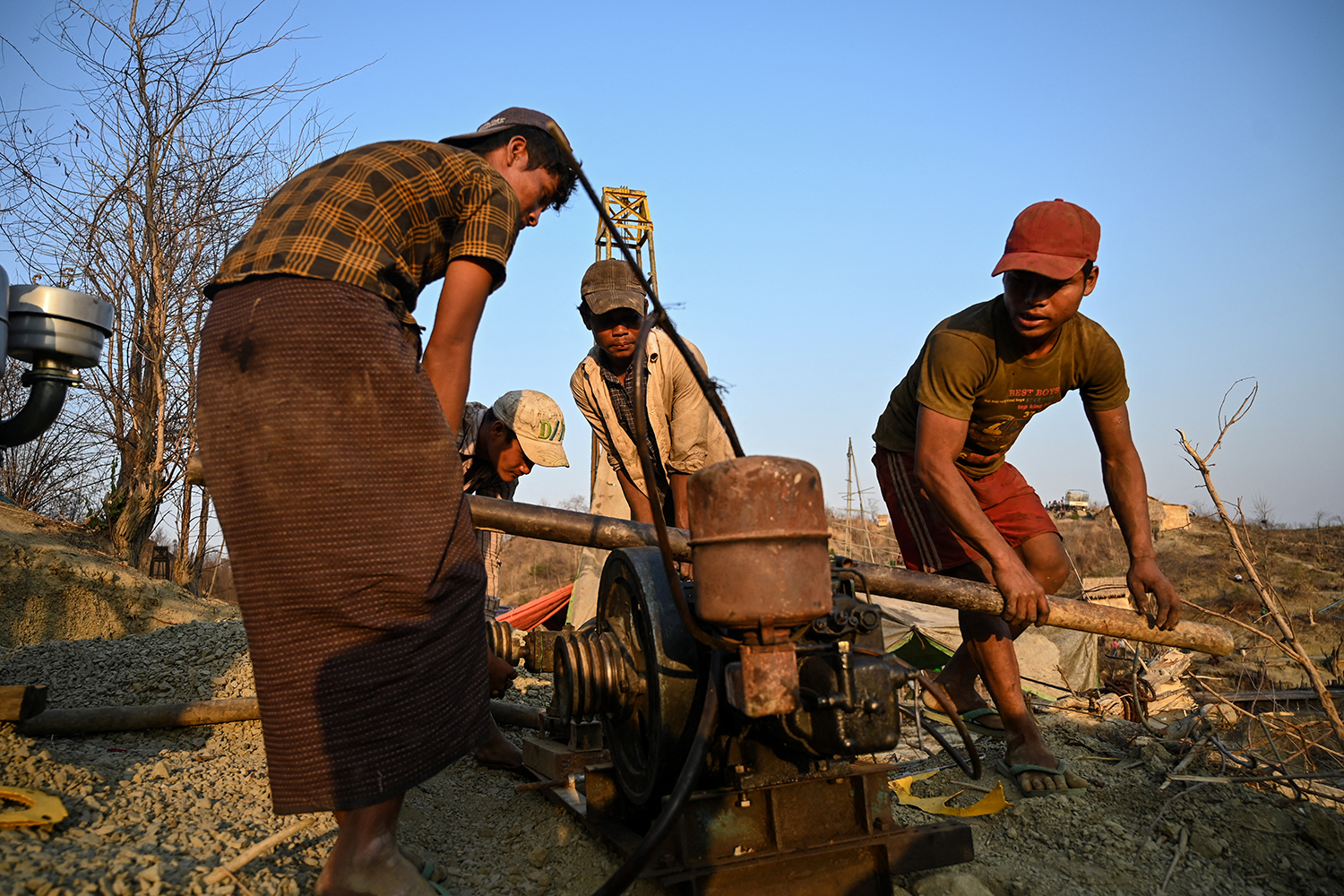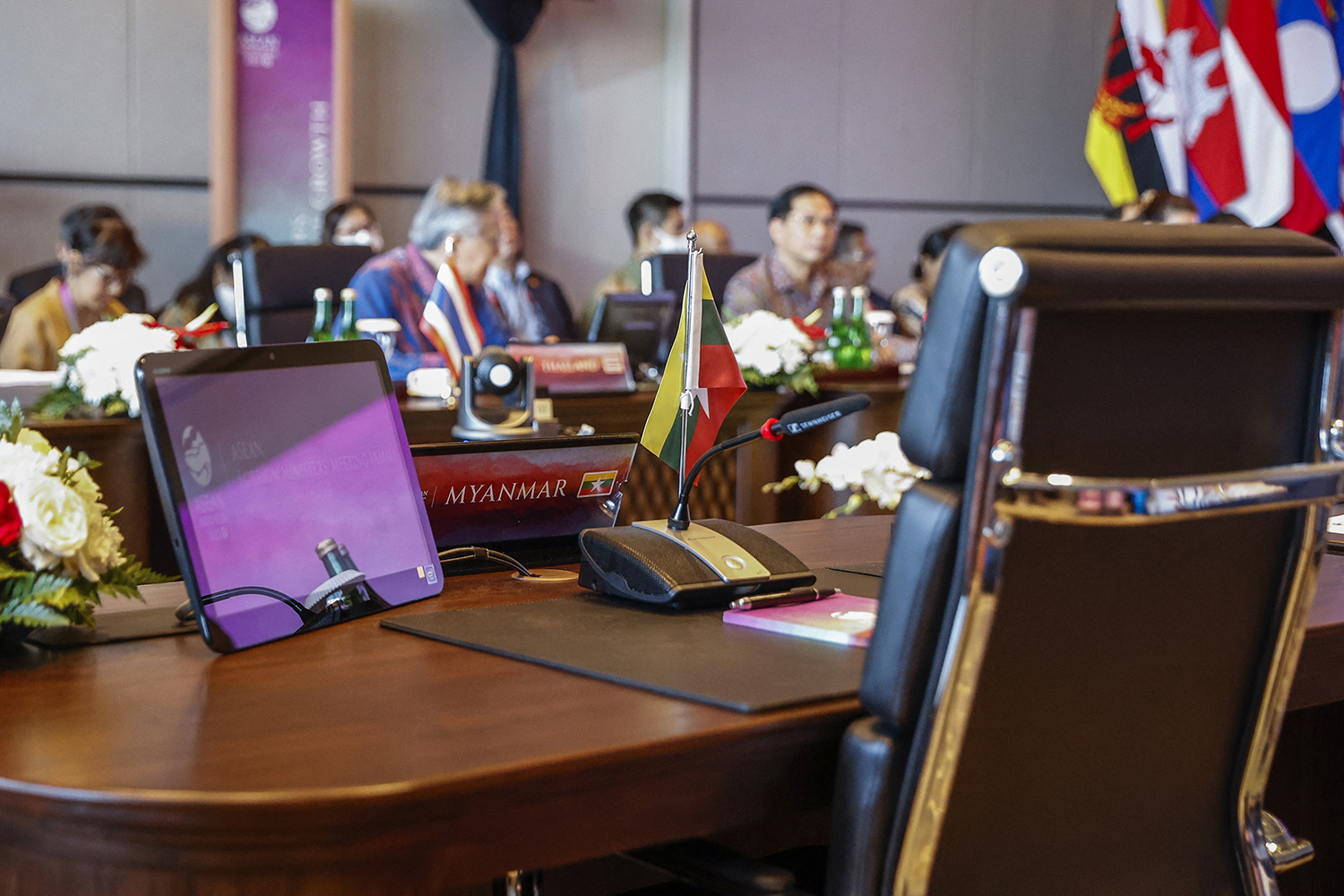The foreign and local partners in a gas-fired power plant at Myingyan have become embroiled in a legal dispute, souring what some have described as an “important milestone” for the power sector.
By KYAW YE LYNN | FRONTIER
A BITTER legal dispute has erupted between investors in a flagship power project involving the International Finance Corporation and Asian Development Bank.
The first phase of the US$300 million, 225-megawatt Myingyan natural gas power project in Mandalay Region is nearing completing, and is expected to come online in December. The project is being developed by Sembcorp Myingyan Power and is seen as crucial to meeting Myanmar’s short-term power needs. The local company was registered in October 2015 after Singapore’s Sembcorp Utilities and MMID Utilities, a Singapore-registered company owned by Myanmar interests, won a tender for the Myingyan project in April 2015.
But Myingyan’s significance is far greater than the many gigawatt hours of power it will produce in the decades ahead. The project is considered a major step forward for the power sector, which until now has struggled to attract international investment. Those that supported the project say it followed international standards and, if replicated, could pave the way for more independent power projects.
But a dispute over financing has soured relations between the partners and resulted in a flurry of legal threats from both sides.
Support more independent journalism like this. Sign up to be a Frontier member.
In June, MMIDU director U Kyaw Paing filed a civil suit in the Yangon Region High Court seeking an injunction to stop Sembcorp Myingyan Power from removing MMIDU’s name from agreements with the government, such as the power purchase agreement.
In the complaint filed to the court under Civil Case No. 58/2017, Kyaw Paing alleged that Sembcorp Myingyan Power “is ignoring the involvement of the plaintiff in the project and trying to remove the plaintiff’s name from the project agreements entered into with the government departments without notifying nor receiving the consent of the plaintiff”. The complaint alleges that Kyaw Paing’s “rights, reputation and business is in danger of being negatively affected” by the defendant’s actions, and also seeks K10 billion in damages. The complaint, along with supporting documents, was submitted to the court at the first hearing in the case on November 8. A second hearing is scheduled for November 28.
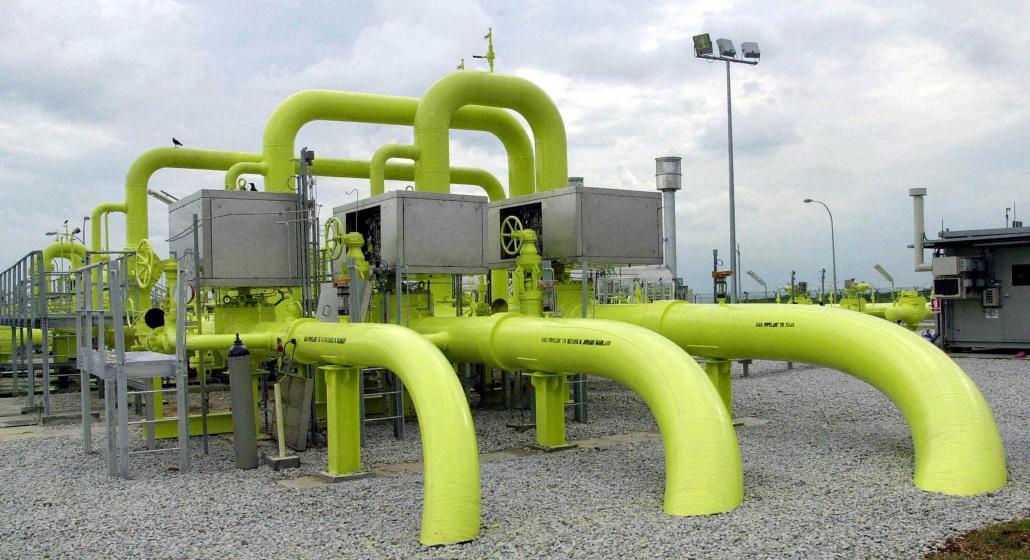
The gas pipeline at Sembcorp Gas plant at Sakra, Jurong Island, off Singapore which receives natural gas from Indonesia’s Natuna Sea. (AFP)
A spokesperson for Sembcorp told Frontier that the dispute arose because MMIDU had not “put in its share of equity” to the Myingyan project. “Sembcorp has engaged a number of times with MMIDU on this matter over the course of the project. It acted in good faith throughout, keeping MMIDU and the authorities updated as appropriate. Given that legal proceedings on this matter are now ongoing, it is not appropriate to go into further detail,” the spokesperson said, adding that the allegations against Sembcorp “are false and wholly without merit”.
In an interview with Frontier, Kyaw Paing confirmed that the dispute related to MMIDU’s equity in the project but rejected any suggestion that he was unable to raise the necessary capital. Frontier cannot provide further detail on the dispute due to the ongoing nature of the case and uncertainty over the application of the 2013 Contempt of Courts Law.
“We have many ways to make the project halt or stop,” Kyaw Paing said. “But we don’t want to because our country is in urgent need of electricity. What we are doing is trying to stop them from removing us from the project. That’s why we are going to court.”
Into the open
The dispute had been kept under wraps until October 19, when a Singaporean businessman, Mr Frankie Tan, held a press conference to announce the formation of an organisation called the Shareholder Protection Group Myanmar.
During the event at Meliá Yangon, Frankie Tan – who has been doing business in Myanmar for around 20 years – called for stronger measures to protect Myanmar companies when they form partnerships with multinational corporations, particularly if the local firm is a minority shareholder. He also provided details on the dispute between Sembcorp and MMIDU, calling it a “case study” for why an organisation such as SPGM was needed.
Frontier has chosen not to publish further details about what was said at the press conference due to the Contempt of Courts Law (see below).
On October 24, Sembcorp Myingyan Power Company director Mr Tan Cheng Guan wrote to Frankie Tan threatening legal action, saying it was “improper and inappropriate for you to be commenting on the subject matter of such proceedings to third parties (and especially the media)”.
“We are advised that you are therefore in breach of Myanmar law and/or in contempt of court. Take notice that we will be taking such steps as we deem necessary to protect our rights, prosecute your contempt of court and/or restrain any further breaches of Myanmar law,” said the letter, which was provided to Frontier by Frankie Tan.
The Sembcorp spokesperson said the company stood by its October 24 letter to Frankie Tan.
Frankie Tan told Frontier he would fight any legal action brought against him by Sembcorp. “I was really surprised [at the legal threat] and I also got angry. This is totally unacceptable,” he said. “So I replied to them to contact my lawyers if they want to sue me in Myanmar as well as in Singapore.”
In the October 24 letter, Mr Tan Cheng Guan also questioned why Frankie Tan had raised the legal case when “it is your company MMID Utilities Pte Ltd that had commenced the suit”.
But Frankie Tan later told Frontier he had resigned from MMIDU on October 9 following a dispute with Kyaw Paing, who had accused him of siding with Sembcorp. He provided a notice published in state newspapers on October 14 in which he announced he was no longer associated with MMIDU.
“U Kyaw Paing thinks I am on the same side with Sembcorp Utilities. I am not. Actually, I feel regret for bringing Sembcorp Utilities into Myanmar,” Frankie Tan said.
He said he would continue with his plan to register SPGM and would invite “industrial experts and professional financial specialists” to join the organisation.
“As for registration of SPGM, it is now in the hands of the managing partner of Polastri Wint & Partners, as we are drafting out the objectives, rules and bylaws of this organisation,” he said.
But the contempt of court threats are not only emanating from Sembcorp’s lawyers. Kyaw Paing confirmed to Frontier on November 8 that he had also submitted a contempt of court complaint against his partner since filing the civil suit.
‘Milestone’ for power sector
Myingyan has been billed as a major step forward for Myanmar’s power sector, which has historically been dominated by the state. Prior to Myingyan, private sector involvement was nearly always on a joint venture basis with the ministry or through bilaterally negotiated power purchase agreements, which have proven significantly more costly for the government and riskier for developers.
The Myingyan project is the first independent power project awarded through a transparent bidding process. It resulted in a highly competitive tariff – the price the government pays the operator for the power generated – and also the development of a model PPA that could be used for future projects. Myingyan was also notable for the involvement of the IFC, the Asian Development Bank and private financiers.
The Myingyan plant will also employ combined cycle technology – generating extra power by routing waste heat from a gas turbine to a steam turbine – to maximise output.
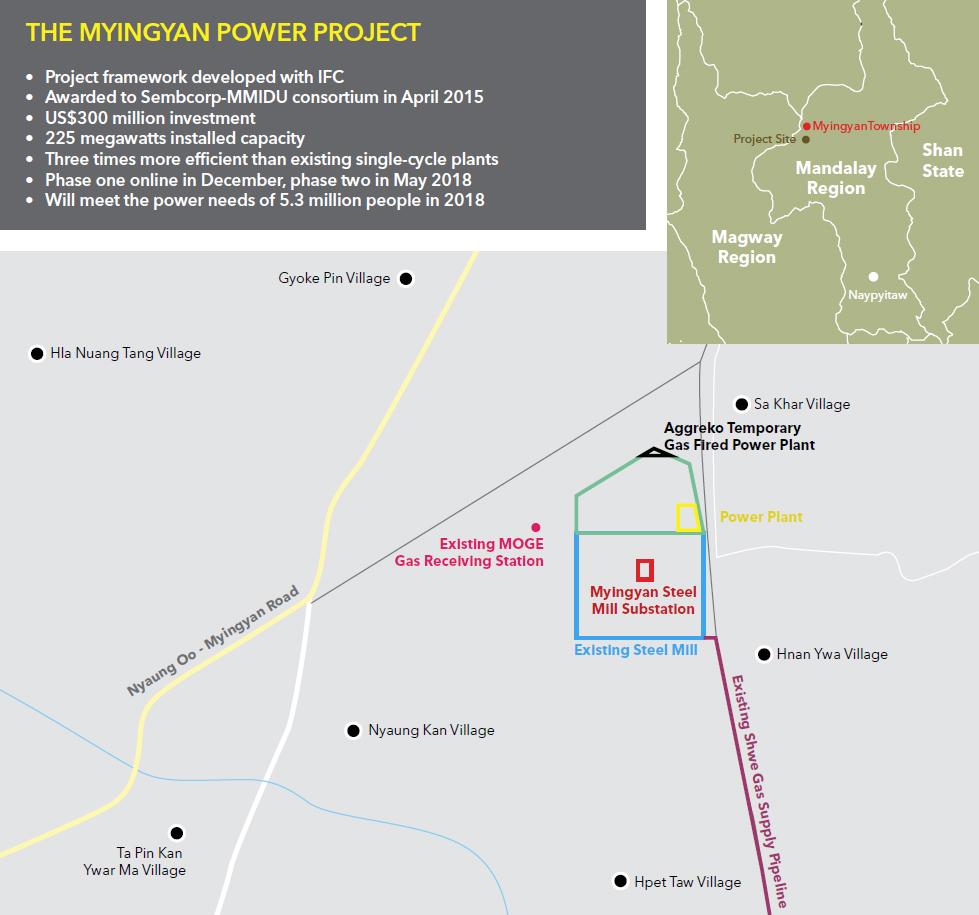
An overview of the Myingyan gas power plant project. (Frontier)
IFC country manager Mr Vikram Kumar said the IFC helped the ministry structure the project in line with international best practices through the development of a public-private partnership framework and PPA.
The plant will “help modernise” the Myanmar power industry, he added. “It is around three times more efficient than the country’s current fleet of single cycle gas power plants, which have very low efficiency … and load factors,” he said. “The project is expected to generate 1,500 gigawatt hours in 2018, meeting the power needs of around 5.3 million people.”
In a July 2016 report, law firm Allen & Overy, which also worked on the project, described the Myingyan IPP as an “important milestone” for the sector.
The delivery of the first power from the plant in the coming months will be the culmination of a process that began nearly five years ago, when the Ministry of Electric Power requested help to develop a model PPA. Importantly, this document needed to be “bankable” so that operators could access financing from institutional lenders at a reasonable cost.
The Sembcorp-MMIDU consortium was one of five that submitted a bid for the project in October 2014. The consortium was selected the following April. In December 2015 a memorandum of agreement was signed, followed by a PPA in March 2016 and build, operate and transfer agreement in January of this year.
Under the PPA, Sembcorp Myingyan Power will supply power to the Ministry of Electricity and Energy for 22 years after which the plant will be transferred to government control.
In a December 2015 statement, Sembcorp said it would have an 80 percent stake in the project, while MMID Utilities would hold the remaining 20 percent.
The China-backed Asian Infrastructure Investment Bank, which approved a $20 million loan in September 2016, declined to comment last week. The ADB did not respond to requests for comment.
The IFC confirmed that its financing for the Myingyan project stands at $57 million. However, it declined to comment on why its project disclosure page says the status of the project is “pending signing”.
When Frontier approached the Ministry of Electricity and Energy for comment, deputy permanent secretary U Htay Aung said: “That issue should not be asked about at the moment. No one will answer your questions.” He added that the first phase would be operational in December and second phase within six months. “The electricity will go into the national grid.”
The Sembcorp spokesperson said construction on the Myingyan IPP is “progressing well and nearing completion”, with combined cycle operations scheduled to begin in May 2018.
A case study in navigating the new contempt law
While the Telecommunications Law has been widely criticised for stifling freedom of expression, less attention has been given to another law enacted in 2013 that also has significant implications for the media. Under the Contempt of Court Law, anyone ruled in criminal contempt faces a maximum prison term of six months.
But what is criminal contempt? The law defines it as an action – including publishing – that scandalises the court, affects the fairness of a case or impairs public trust in the judicial system. It also includes “pre-commenting, describing in writing, publishing, distribution, before the judicial decisions are passed”.
The law features several immunity clauses, including “comment or fair review” on a concluded case. Another clause states: “In connection with the judicial act which is being undertaken, orally or by words or by sign, by significant pattern, or by other means or announcing, by describing in writing as information, or publishing or distribution, of any fair, true and firm shall not be regarded as the Contempt of Court.”
The law has been criticised by groups that promote freedom of expression, with Human Rights Watch stating in 2016 that it was “severely limiting what can be written about the facts of the case before the court has ruled”.
But the vagueness of the wording and the relative lack of cases brought to date makes it difficult to predict how the law could be applied.
The Union Supreme Court’s Handbook for Media Access to the Courts only advises journalists to “avoid writing the criticism causing the contempt of court and against public justice (fair trial)”.
Myanmar Media Lawyers’ Network secretary U Than Zaw Aung said publishing articles that include comments of parties or clients of an ongoing case could result in a contempt of court case, particularly if it “scandalises” the court or affects the fairness of the judicial process.
But he added that it would also “depend on the context of the story”.
Mr Oliver Spencer, an adviser to Free Expression Myanmar, said a good contempt of court law should protect peoples’ right to justice. “Myanmar’s law is unfortunately both vague and broad, so could be easily misused. Bad contempt of court laws undermine open justice and help malicious complainants to censor the media and suppress activists. Bad contempt laws are often misused by powerful people to hide cases from the public, who would likely be shocked if they knew more,” he said.
Contempt of court was raised numerous times during the production of this article. When Frontier initially contacted Sembcorp for comment by email, Sembcorp Myingyan Power Company responded by threatening contempt of court charges or other legal action if Frontier published “any articles on the subject matter of the Email Query, including but not limited to the comments made by Mr Frankie Tan to your magazine and/or in the course of his press conference”.
It also demanded that Frontier confirm in writing within three days that it would agree not to publish any articles “on the subject matter of the Email Query”. “Take notice that in the event that we do not receive such confirmation, we will take such steps as we deem necessary to protect our rights, prosecute any contempt of court and/or restrain any breach of Myanmar law.”
Frontier refused to accede to the demand and the company later agreed to comment on the record.
Than Zaw Aung said this demand had no basis under the law. “Legal action for not replying them within three days is impossible.”
TOP PHOTO: Steve Tickner | Frontier


